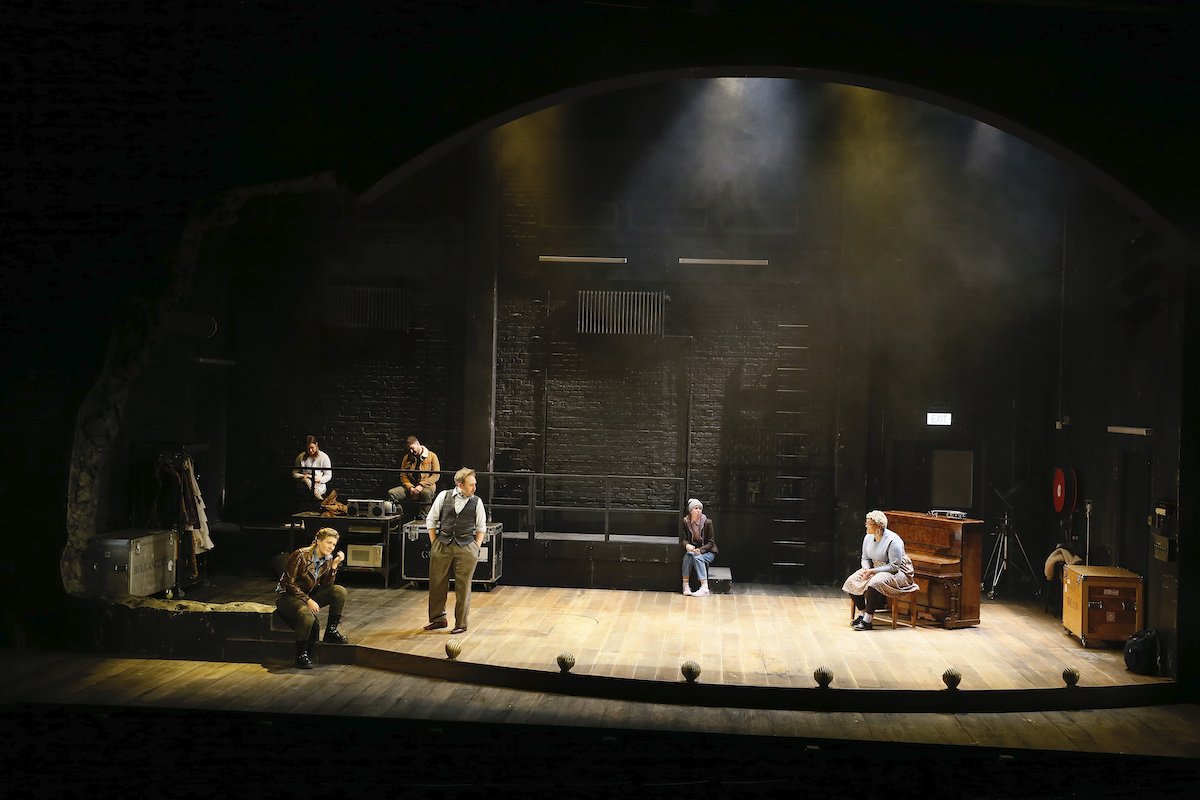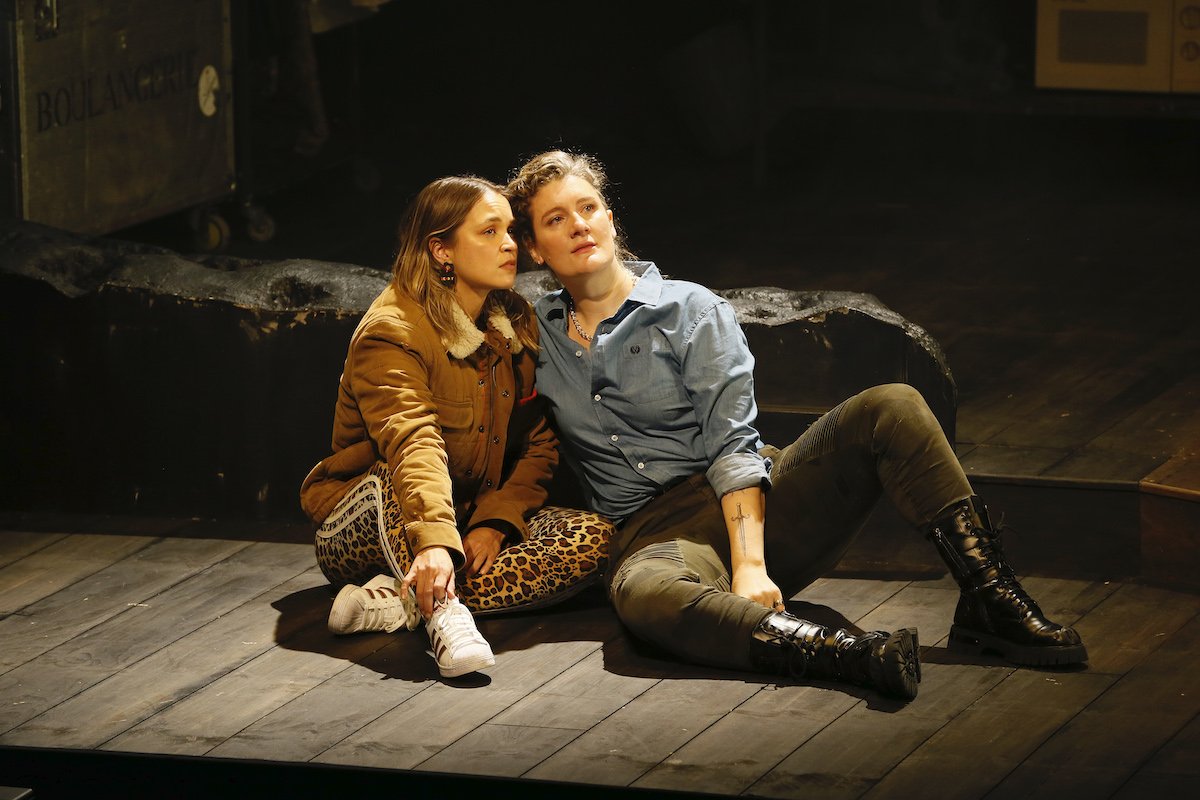Review: Cyrano is incandescent
Written by Virginia Gay after Edmond Rostand, Directed by Sarah Goodes
Review by Charlotte Smee
When I was about 13, I was an unashamedly nerdy drama kid. One of the first professional plays that I vividly remember seeing was a production of Cyrano de Bergerac directed by Damien Ryan, at the Illawarra Performing Arts Centre. It’s a very old story, a fictionalisation of a real person’s life written by Edmond Rostand in 1897. It’s so old it’s the reason why we’ve imported the word “panache” from French to English. The bones of it are Cyrano is a gifted poet, soldier, musician with a huge nose. He helps the hot new soldier on the scene, Christian, woo the beautiful Roxanne with his words because he has decided he’s unworthy of her love. Roxanne and Christian fall in love, Christian dies. More lies, and 15 years later Roxanne is a mourning nun/sex worker and only realises it was really Cyrano all along as he dies in her arms. It has been adapted countless times.
I remember relating so hard to the titular character and thinking, gosh, if a brilliantly clever man with an ugly nose can’t allow himself to fall in love with a beautiful woman how on earth would a little tiny person with so many thoughts like mine ever be able to overcome the shame that I felt? How would someone ever find a reason to love me, or forgive me for the lies I’d told, if I didn’t go off to war and die at the end of my story? And why did no one ever give Roxanne a say in who she chose to love?
This is an oversimplification tainted by hindsight, of course. But stories are formative. They tell us how to be, they show us how to love, they are a reference point our parents cannot give us. Queer people are often tragic figures in stories, killed off for love, suffering until they can’t anymore, and trying to break out of so many boundaries that there is nothing left but pain. This is not to say that these stories aren’t important, but it is just as important to show your teenage self how to be truly joyous as it is to show them how to suffer.
The best stories teach us how to do both. They are heart-wrenching, funny, and unafraid to straddle genres. In Cyrano, Virginia Gay reaches into your chest cavity while you’re busy laughing, gently pulls out your heart and tears it to tiny pieces before tenderly, dutifully stitching it back together with tinsel and streamers.
Her version of the story is decidedly, radically different. Gay reduces the huge troupe of characters in the original story to Cyrano (played by the woman herself), Roxanne (the brilliant Tuuli Narkle), Christian (or Yan, by the hunky Claude Jabbour) and three chorus members (1, 2, and 3; Milo Hartill, Robin Goldsworthy and Holly Austin). Instead of telling the story faithfully, the chorus members are a group of assistants (both real and in Cyrano’s head) trying to remember how it goes. They are so perfectly drawn; 1 is a caring, calm presence who guides Cyrano to baking metaphors, 2 is me as a 13-year-old, obsessed with theatrical tradition and the glory of tragedy, and 3 is a brand-new person who doesn’t know how the story goes and doesn’t understand why it would ever be sad. These characters allow for a well-rounded and generously made argument throughout. Instead of a sermon through Cyrano, we witness a collaborative conversation about the responsibilities of storytelling.
The cast is heaving with joy and talent. Hartill’s voice in songs dotted throughout the play (by Xani Kolac and others) is so lovely, and Austin’s instrumental accompaniment on the piano and the banjo, as well as her earnest warmth, is a delight. Narkle as Roxanne is sparkly, vocal, rightfully angry and, as she often says in the play, ‘fully realised’. Goldsworthy is hilarious, encapsulating the snobby voice of ‘reason’ and providing many a complaint you’d expect from a ‘regular’ theatre critic. Jabbour is ocker, macho, and surprisingly affectionate in the end. Gay is brooding, intelligent, and brings just the right amount of longing and self-sacrifice you’d want from any queer story.
The play begins as the original does: in a theatre. The cast gather around a ghost light in a cavernous, crumbling old proscenium designed by Elizabeth Gadsby and realised by Jo Briscoe. It features a traditionally round, wooden stage edged by brassy shell-shaped footlights. Briscoe dresses the characters in simple, modern costumes; 3 wears jeans and a purple hoodie, Roxanne is a modern exercise-tights-wearing woman, and Cyrano and Yan wear khaki pants and combat boots. It gives a sense of the modernity of the story, and the bare staging allows for a beautiful moment of colour at the end of the play that made me audibly gasp, then sob. These theatrical images also give a clear sense of the attitudes of the play; we acknowledge the traditions we come from, but we are determined to drag theatre and its stories into the future any way we can.
Sarah Goodes directs with a matching sense of humour, determination and verve. When they begin the story, the cast flick the footlights up, push the ghost light out of the way and step off the front of the stage. Cyrano hides in the corners near the exit, always ever so close to quitting her love. Roxanne enters on roller skates, Yan enters to the blaring sounds of Wolfmother’s ‘Woman’, and the three chorus members are always onstage to witness and guide. She draws out the vivid poetry in Gay’s words (find some highlights here), and it’s wonderfully difficult to tell where the influence of Gay ends and Goodes begins.
Cyrano is truly special. It shines so brightly that it hurts. Virginia Gay writes this for herself, sure, but also for her fellow creatives, for reformed theatrical snobs, for queer bodies, for women, for little enbies named Charlotte, for all of us. It is generous, loving, welcoming, clever and brave. A rare theatrical gem that comes from a true sense of collaboration, togetherness, and radical optimism, Cyrano is incandescent.
Cyrano plays at the Southbank Theatre, The Sumner until 29 October. Find tickets and information here.
Images by Jeff Busby
Charlotte is the editor of Kaleidoscope Arts Journal, a little enby and a big mess. Their friends regularly worry that they might overdose on theatre.
Like this review? Buy us a $5 coffee here. You can do it once, once a month or as many times as you like.





